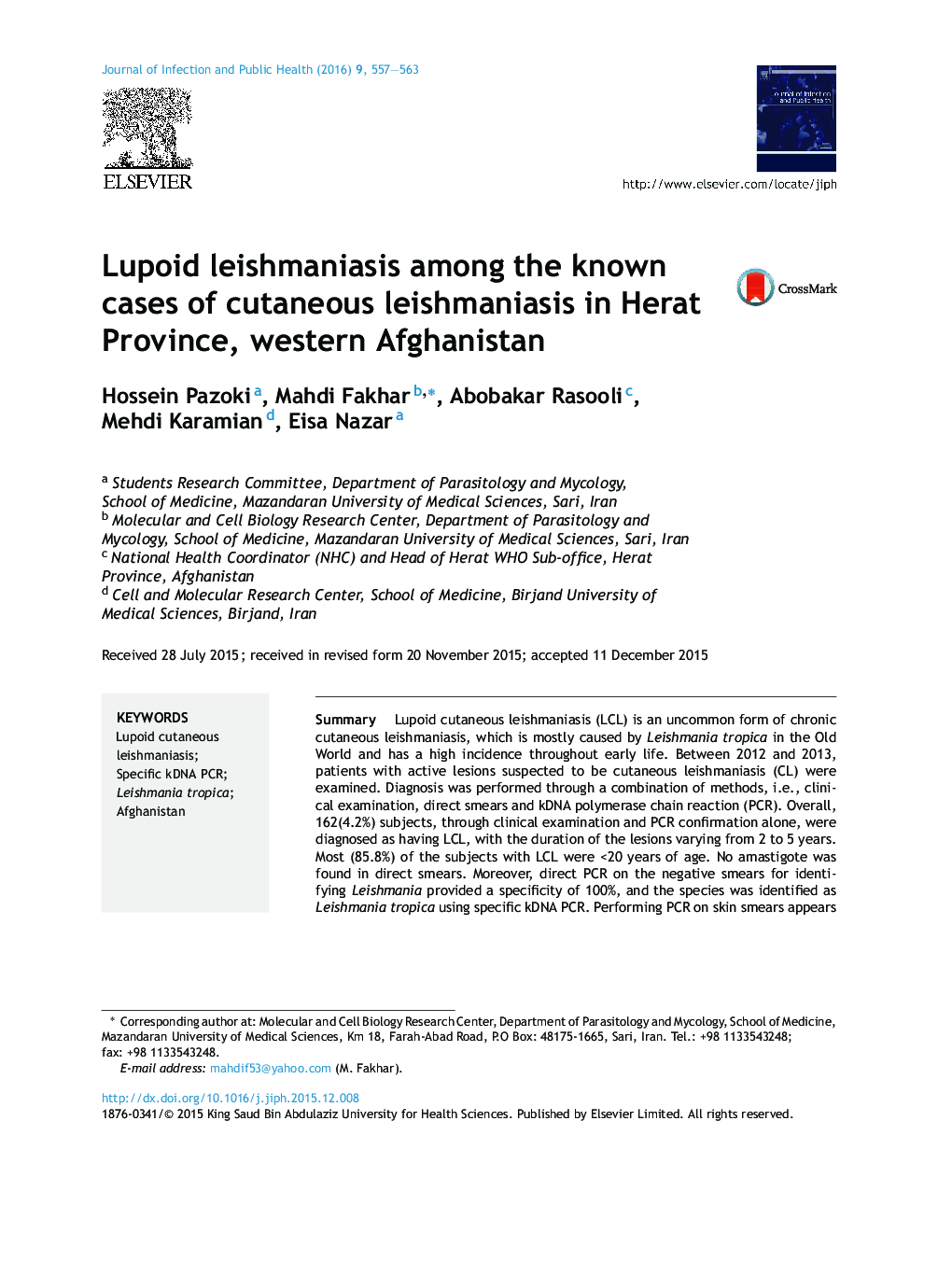| Article ID | Journal | Published Year | Pages | File Type |
|---|---|---|---|---|
| 3405796 | Journal of Infection and Public Health | 2016 | 7 Pages |
SummaryLupoid cutaneous leishmaniasis (LCL) is an uncommon form of chronic cutaneous leishmaniasis, which is mostly caused by Leishmania tropica in the Old World and has a high incidence throughout early life. Between 2012 and 2013, patients with active lesions suspected to be cutaneous leishmaniasis (CL) were examined. Diagnosis was performed through a combination of methods, i.e., clinical examination, direct smears and kDNA polymerase chain reaction (PCR). Overall, 162(4.2%) subjects, through clinical examination and PCR confirmation alone, were diagnosed as having LCL, with the duration of the lesions varying from 2 to 5 years. Most (85.8%) of the subjects with LCL were <20 years of age. No amastigote was found in direct smears. Moreover, direct PCR on the negative smears for identifying Leishmania provided a specificity of 100%, and the species was identified as Leishmania tropica using specific kDNA PCR. Performing PCR on skin smears appears to offer a valuable method for the diagnosis of LCL because it is highly specific and sensitive, especially for clinical correlative studies.
